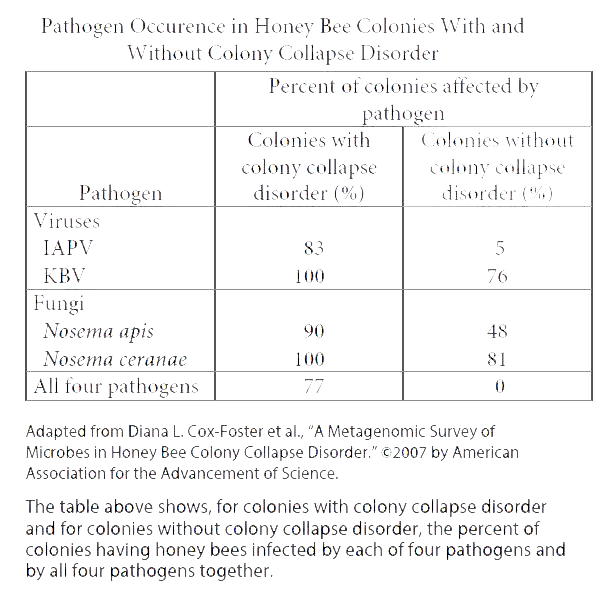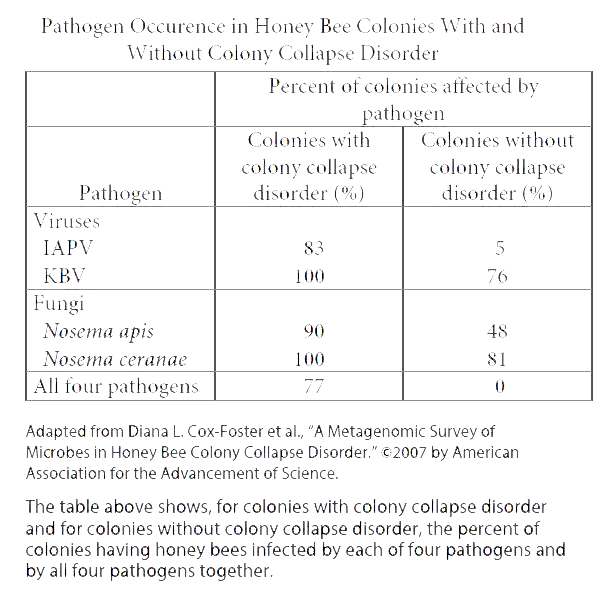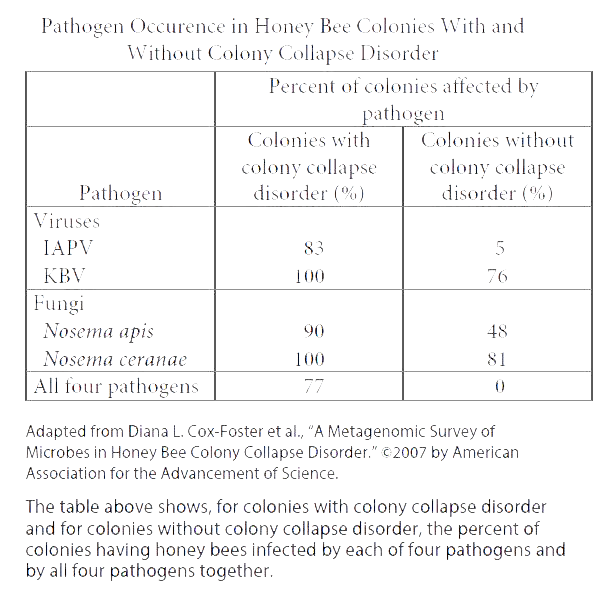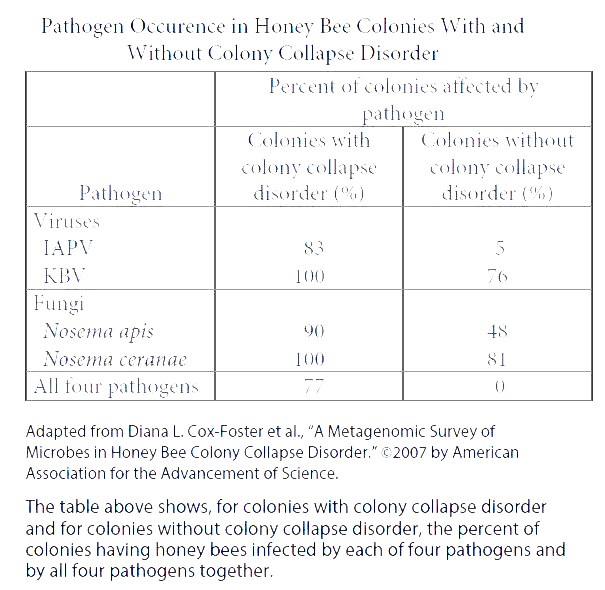Which of the following is/are true?
I. Biowar is the use of biological weapons against humans and/or their crops and animals
II. Bioethics is the unauthorised use of bioresources and traditional knowledge related to bioresources for commercial benefits
III. Biopatent is exploitation of bioresources of other nations without proper athorisation
II only
I only
I and II
I and III
The correct Answer is:B
To determine which of the statements provided is true, we will analyze each statement one by one.
1. Analyzing Statement I:
- The statement claims: "Biowar is the use of biological weapons against humans and/or their crops and animals."
- Evaluation: This definition is accurate. Biowar indeed refers to the use of biological agents (like bacteria, viruses, or toxins) as weapons in warfare against humans, crops, or animals.
- Conclusion: Statement I is true.
2. Analyzing Statement II:
- The statement claims: "Bioethics is the unauthorized use of bioresources and traditional knowledge related to bioresources for commercial benefits."
- Evaluation: This definition is incorrect. Bioethics is actually the study of ethical issues arising from advances in biology and medicine, focusing on the moral implications and responsibilities related to biological research and applications.
- Conclusion: Statement II is false.
3. Analyzing Statement III:
- The statement claims: "Biopatent is exploitation of bioresources of other nations without proper authorization."
- Evaluation: This definition is also incorrect. A biopatent refers to the legal rights granted to individuals or organizations over biological inventions or discoveries, typically protecting the rights of the originators. Exploitation without authorization contradicts the principles of biopatenting.
- Conclusion: Statement III is false.
Final Conclusion:
Based on the evaluations:
- Statement I is true.
- Statements II and III are false.
Thus, the correct answer is that only Statement I is true. Therefore, the answer is Option 2: One only.
---
- The statement claims: "Biowar is the use of biological weapons against humans and/or their crops and animals."
- Evaluation: This definition is accurate. Biowar indeed refers to the use of biological agents (like bacteria, viruses, or toxins) as weapons in warfare against humans, crops, or animals.
- Conclusion: Statement I is true.
- The statement claims: "Bioethics is the unauthorized use of bioresources and traditional knowledge related to bioresources for commercial benefits."
- Evaluation: This definition is incorrect. Bioethics is actually the study of ethical issues arising from advances in biology and medicine, focusing on the moral implications and responsibilities related to biological research and applications.
- Conclusion: Statement II is false.
- The statement claims: "Biopatent is exploitation of bioresources of other nations without proper authorization."
- Evaluation: This definition is also incorrect. A biopatent refers to the legal rights granted to individuals or organizations over biological inventions or discoveries, typically protecting the rights of the originators. Exploitation without authorization contradicts the principles of biopatenting.
- Conclusion: Statement III is false.
Based on the evaluations:
- Statement I is true.
- Statements II and III are false.
Topper's Solved these Questions
Similar Questions
Which of the following statement (s) about taxonomic aids is/are true
I. Keys are used to identify plants and animals based on similarities and disimilarities.
II. Flora contains the account of habitat and distribution of plants in a given area.
III. Flora provides an index to the plant species found in a particular area.
IV. Monographs provide information for identification of species found in an area
View SolutionFind out which among the following is true and which is false
(i) Recombinant DNA technology has made it possible to engineer microbes, plants and animals such that they have novel capabilities.
(ii) Genetically modified organisms have been created by using methods other than natural methods to transfer one or more genes from organism to another, generally using techniques such as recombinant DNA technology.
(iii) GM plants have been useful in increasing crop yields, reduce post harvest losses and make crops more tolerant of stressess.
(iv) Recombinant DNA technology process have made immense impact in the area of healthcare by enabling mass production of safe and more effective therapeutics.
(v) since the recombinant therapeutics are identical to human proteins, they do not induced unwanted immunological responses.
View Solution
Knowledge Check
Honey bees are hosts to the pathogenic large ectoparasitic mite Varroa destructor (Varroa mites). These mites feed on bee hemolymph (blood) and can kill bees directly or by increasing their susceptibility
line 5- to secondary infection with fungi, bacteria or viruses. Little is known about the natural defenses that keepthe mite infections under control. Pyrethrums are a group of flowering plants which include Chrysanthemum coccineum, Chrysanthemum
line 10- cinerariifolium, Chrysanthemum marschalli, and related species. These plants produce potent insecticides with anti-mite activity. The naturally occurring insecticides are known as pyrethrums. A synonym for the naturally occurring pyrethrums is
line 15- pyrethrin and synthetic analogues of pyrethrums are known as pyrethroids. In fact, the human mite infestation known as scabies (Sarcoptes scabiei) is treated with a topical pyrethrum cream. We suspect that the bees of commercial bee
line 20- colonies which are fed mono-crops are nutritionally deficient. In particular, we postulate that the problem is a diet deficient in anti-mite toxins: pyrethrums, and possibly other nutrients which are inherent in such plants. without, at least, intermittent feeding on
line 25- the pyrethrum producing plants, bee colonies are susceptible to mite infestations which can become fatal either directly or due to a secondary infection of immunocompromised or nutritionally deficient bees. This secondary infection can be viral, bacterial or
line 30- fungal and may be due to one or more pathogens. In addition, immunocompromised or nutritionally deficient bees may be further weakened when commercially produced insecticides are introduced into their hives by bee keepers in an effort to fight
line 35- mite infestation. We further postulate that the proper dosage necessary to prevent mite infestation may be better left to the bees, who may seek out or avoid pyrethrum containing plants depending on the amount necessary to defend against mites and the
line 40- amount already consumed by the bees, which in higher doses could be potentially toxic to them. This hypothesis can best be tested by a trial wherein a small number of commercial honey bee colonies are offered a number of pyrethrum
line 45- producing plants, as well as a typical bee food source such as clover, while controls are offered only the clover. Mites could then be introduced to each hive with note made as to the choice of the bees, and the effects of the mite parasites on the experimental
line 50 - colonies versus control colonies. It might be beneficial to test wild-type honey bee colonies in this manner as well, in case there could be some genetic difference between them that affects the bees’ preferences for pyrethrum producing flowers.

As used in line 35, “postulate” most nearly means toAmake an unfounded assumption.Bput forth an idea or claim.Cquestion a belief or theoryDconclude based on firm evidence.Honey bees are hosts to the pathogenic large ectoparasitic mite Varroa destructor (Varroa mites). These mites feed on bee hemolymph (blood) and can kill bees directly or by increasing their susceptibility
line 5- to secondary infection with fungi, bacteria or viruses. Little is known about the natural defenses that keepthe mite infections under control. Pyrethrums are a group of flowering plants which include Chrysanthemum coccineum, Chrysanthemum
line 10- cinerariifolium, Chrysanthemum marschalli, and related species. These plants produce potent insecticides with anti-mite activity. The naturally occurring insecticides are known as pyrethrums. A synonym for the naturally occurring pyrethrums is
line 15- pyrethrin and synthetic analogues of pyrethrums are known as pyrethroids. In fact, the human mite infestation known as scabies (Sarcoptes scabiei) is treated with a topical pyrethrum cream. We suspect that the bees of commercial bee
line 20- colonies which are fed mono-crops are nutritionally deficient. In particular, we postulate that the problem is a diet deficient in anti-mite toxins: pyrethrums, and possibly other nutrients which are inherent in such plants. without, at least, intermittent feeding on
line 25- the pyrethrum producing plants, bee colonies are susceptible to mite infestations which can become fatal either directly or due to a secondary infection of immunocompromised or nutritionally deficient bees. This secondary infection can be viral, bacterial or
line 30- fungal and may be due to one or more pathogens. In addition, immunocompromised or nutritionally deficient bees may be further weakened when commercially produced insecticides are introduced into their hives by bee keepers in an effort to fight
line 35- mite infestation. We further postulate that the proper dosage necessary to prevent mite infestation may be better left to the bees, who may seek out or avoid pyrethrum containing plants depending on the amount necessary to defend against mites and the
line 40- amount already consumed by the bees, which in higher doses could be potentially toxic to them. This hypothesis can best be tested by a trial wherein a small number of commercial honey bee colonies are offered a number of pyrethrum
line 45- producing plants, as well as a typical bee food source such as clover, while controls are offered only the clover. Mites could then be introduced to each hive with note made as to the choice of the bees, and the effects of the mite parasites on the experimental
line 50 - colonies versus control colonies. It might be beneficial to test wild-type honey bee colonies in this manner as well, in case there could be some genetic difference between them that affects the bees’ preferences for pyrethrum producing flowers.

Which choice provides the best evidence for the answer to the previous question?ALines 1-2 (“Honey bees... mites”)BLines 6-7 (“Little... control”)CLines 31-35 (“In addition... infestation”)DLines 47-50 (“Mites... control colonies”)Honey bees are hosts to the pathogenic large ectoparasitic mite Varroa destructor (Varroa mites). These mites feed on bee hemolymph (blood) and can kill bees directly or by increasing their susceptibility
line 5- to secondary infection with fungi, bacteria or viruses. Little is known about the natural defenses that keepthe mite infections under control. Pyrethrums are a group of flowering plants which include Chrysanthemum coccineum, Chrysanthemum
line 10- cinerariifolium, Chrysanthemum marschalli, and related species. These plants produce potent insecticides with anti-mite activity. The naturally occurring insecticides are known as pyrethrums. A synonym for the naturally occurring pyrethrums is
line 15- pyrethrin and synthetic analogues of pyrethrums are known as pyrethroids. In fact, the human mite infestation known as scabies (Sarcoptes scabiei) is treated with a topical pyrethrum cream. We suspect that the bees of commercial bee
line 20- colonies which are fed mono-crops are nutritionally deficient. In particular, we postulate that the problem is a diet deficient in anti-mite toxins: pyrethrums, and possibly other nutrients which are inherent in such plants. without, at least, intermittent feeding on
line 25- the pyrethrum producing plants, bee colonies are susceptible to mite infestations which can become fatal either directly or due to a secondary infection of immunocompromised or nutritionally deficient bees. This secondary infection can be viral, bacterial or
line 30- fungal and may be due to one or more pathogens. In addition, immunocompromised or nutritionally deficient bees may be further weakened when commercially produced insecticides are introduced into their hives by bee keepers in an effort to fight
line 35- mite infestation. We further postulate that the proper dosage necessary to prevent mite infestation may be better left to the bees, who may seek out or avoid pyrethrum containing plants depending on the amount necessary to defend against mites and the
line 40- amount already consumed by the bees, which in higher doses could be potentially toxic to them. This hypothesis can best be tested by a trial wherein a small number of commercial honey bee colonies are offered a number of pyrethrum
line 45- producing plants, as well as a typical bee food source such as clover, while controls are offered only the clover. Mites could then be introduced to each hive with note made as to the choice of the bees, and the effects of the mite parasites on the experimental
line 50 - colonies versus control colonies. It might be beneficial to test wild-type honey bee colonies in this manner as well, in case there could be some genetic difference between them that affects the bees’ preferences for pyrethrum producing flowers.

Which choice provides the best evidence for the answer to the previous question?ALines 3-5 (“These mites... viruses”)BLines 16-18 (“In fact... cream”)CLines 19-21 (“We suspect... deficient”)DLines 24-28 (“Without... bees”)
Which of the following statements about transgenic animals is/are false
(i) Transgenic animals are designed to study how genes are regulated
(ii) They are specially made to serve as models for human diseases
(iii) Transgenic cow Rosie was created to produce human protein α-1 antitrypsin
(iv) Transgenic mice are used to test the safety of vaccines
View SolutionWhich of the following statement/s is/are and example of genetic engineering?
I. Inserting a gene for human insulin production into bacteria.
II. Selective breeding to produce cattle with high milk yields.
III. Using methods like crop rotation with leguminous plants to increase the fertility of the soil.
IV. Vegetative propagation and grafting are practised to ensure higher yield.
View SolutionConsider the following statements.
I) Transgenic animals are more sensitive to the toxic substance than non-transgenic animals.
II) Useful biological products can be produced by introducing the portion of DNA which codes for a particular product into transgenic animals
III) Brazzein is a protein produced by a west African plant, Pentadiplandra brazzeana which is approximately 2000 time as sweet as sugar.
Which of the statements are given above are correct?
View SolutionIt is very commonly thought that the sciences and humanities are producing two cultures which are opposed to each other. Science is even accused of not being sympathetic to the well-being of society. All this is due to the debatable use made by some scientists of their discoveries. However, science has now become increasingly aware of its responsibility towards society. Consequently, many scientists are of the opinion that science should be defined in humanistic terms. According, I.I. Rabi defines science as follows :
"Science is an adventure of the whole human race to learn to live in and perhaps to love the universe in which they are. To be a part of it is to understand it, to understand oneself, to begin to feel that there is a capacity within man far beyond that he felt he had, of an infinite extension of human possibilities - not just on the material side..." Rabi proposes that science be taught “with a certain historical understanding, with a certain philosophical understanding, with a social understanding and a human understanding". At the moment, we are dealing with physics and one might well ask if we can define physics also in humanistic terms. Gerald Halton provides us with a relevant definition of physics. According to him :
"Physics is a sequence of related ideas whose pursuit provides one with the cumulative effect of an even higher vantage point and a more encompassing view of the working of nature. Physics is neither an isolated bloodless body of facts and theories with mere vocational usefulness, nor a glorious entertainment restricted to an elite of specalists. Rather students of physics may leave them unprepared for their own time. They can be neither participants nor even intelligent spectators in one of the great adventures”.
It will be no exaggeration if we say that the fate of society is linked to physics as whatever is thought or discovered in physics immediately affects the society. Our intellegence lies in applying physics to solve the pressing problems that the society faces and not to annihilate it.
According to I.I Rabi
View SolutionHoney bees are hosts to the pathogenic large ectoparasitic mite Varroa destructor (Varroa mites). These mites feed on bee hemolymph (blood) and can kill bees directly or by increasing their susceptibility
line 5- to secondary infection with fungi, bacteria or viruses. Little is known about the natural defenses that keepthe mite infections under control. Pyrethrums are a group of flowering plants which include Chrysanthemum coccineum, Chrysanthemum
line 10- cinerariifolium, Chrysanthemum marschalli, and related species. These plants produce potent insecticides with anti-mite activity. The naturally occurring insecticides are known as pyrethrums. A synonym for the naturally occurring pyrethrums is
line 15- pyrethrin and synthetic analogues of pyrethrums are known as pyrethroids. In fact, the human mite infestation known as scabies (Sarcoptes scabiei) is treated with a topical pyrethrum cream. We suspect that the bees of commercial bee
line 20- colonies which are fed mono-crops are nutritionally deficient. In particular, we postulate that the problem is a diet deficient in anti-mite toxins: pyrethrums, and possibly other nutrients which are inherent in such plants. without, at least, intermittent feeding on
line 25- the pyrethrum producing plants, bee colonies are susceptible to mite infestations which can become fatal either directly or due to a secondary infection of immunocompromised or nutritionally deficient bees. This secondary infection can be viral, bacterial or
line 30- fungal and may be due to one or more pathogens. In addition, immunocompromised or nutritionally deficient bees may be further weakened when commercially produced insecticides are introduced into their hives by bee keepers in an effort to fight
line 35- mite infestation. We further postulate that the proper dosage necessary to prevent mite infestation may be better left to the bees, who may seek out or avoid pyrethrum containing plants depending on the amount necessary to defend against mites and the
line 40- amount already consumed by the bees, which in higher doses could be potentially toxic to them. This hypothesis can best be tested by a trial wherein a small number of commercial honey bee colonies are offered a number of pyrethrum
line 45- producing plants, as well as a typical bee food source such as clover, while controls are offered only the clover. Mites could then be introduced to each hive with note made as to the choice of the bees, and the effects of the mite parasites on the experimental
line 50 - colonies versus control colonies. It might be beneficial to test wild-type honey bee colonies in this manner as well, in case there could be some genetic difference between them that affects the bees’ preferences for pyrethrum producing flowers.

Based on data in the table, which of the four pathogens infected the highest percentage of honeybee colonies without colony collapse disorder?
View Solution
